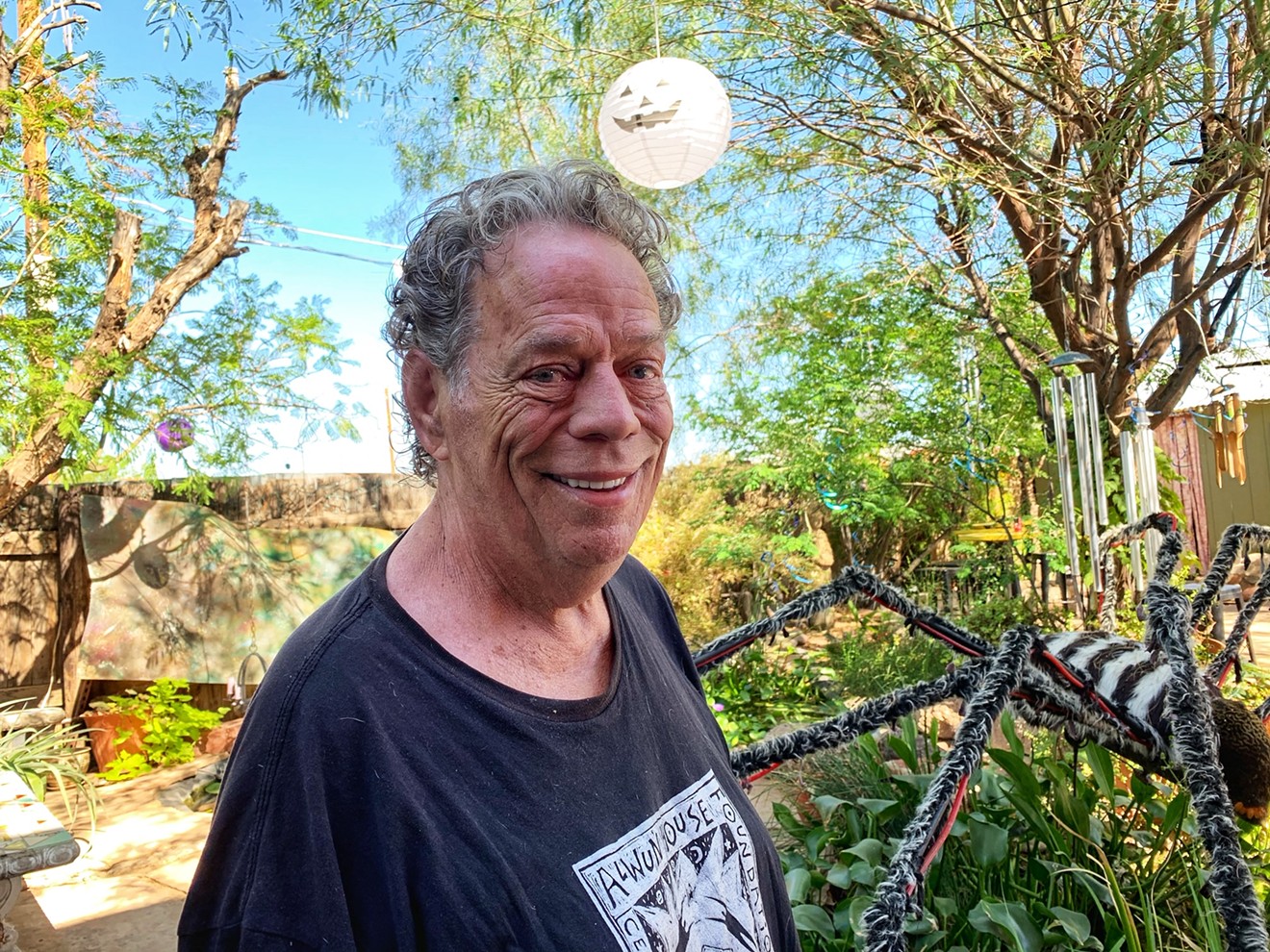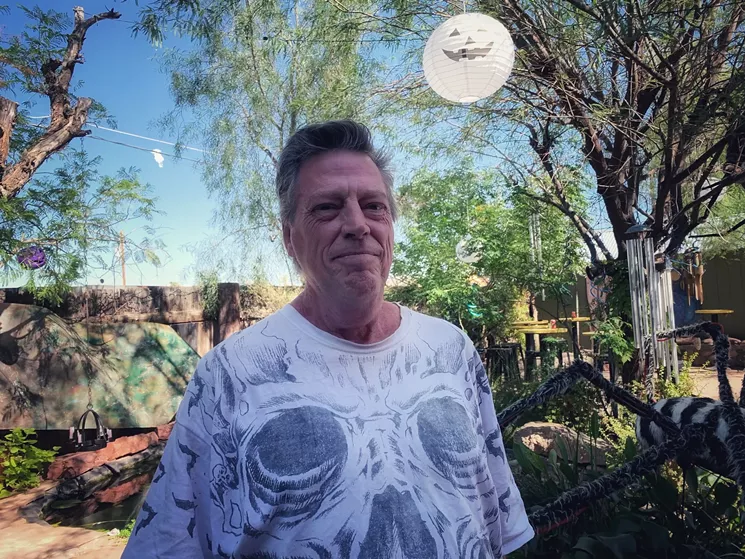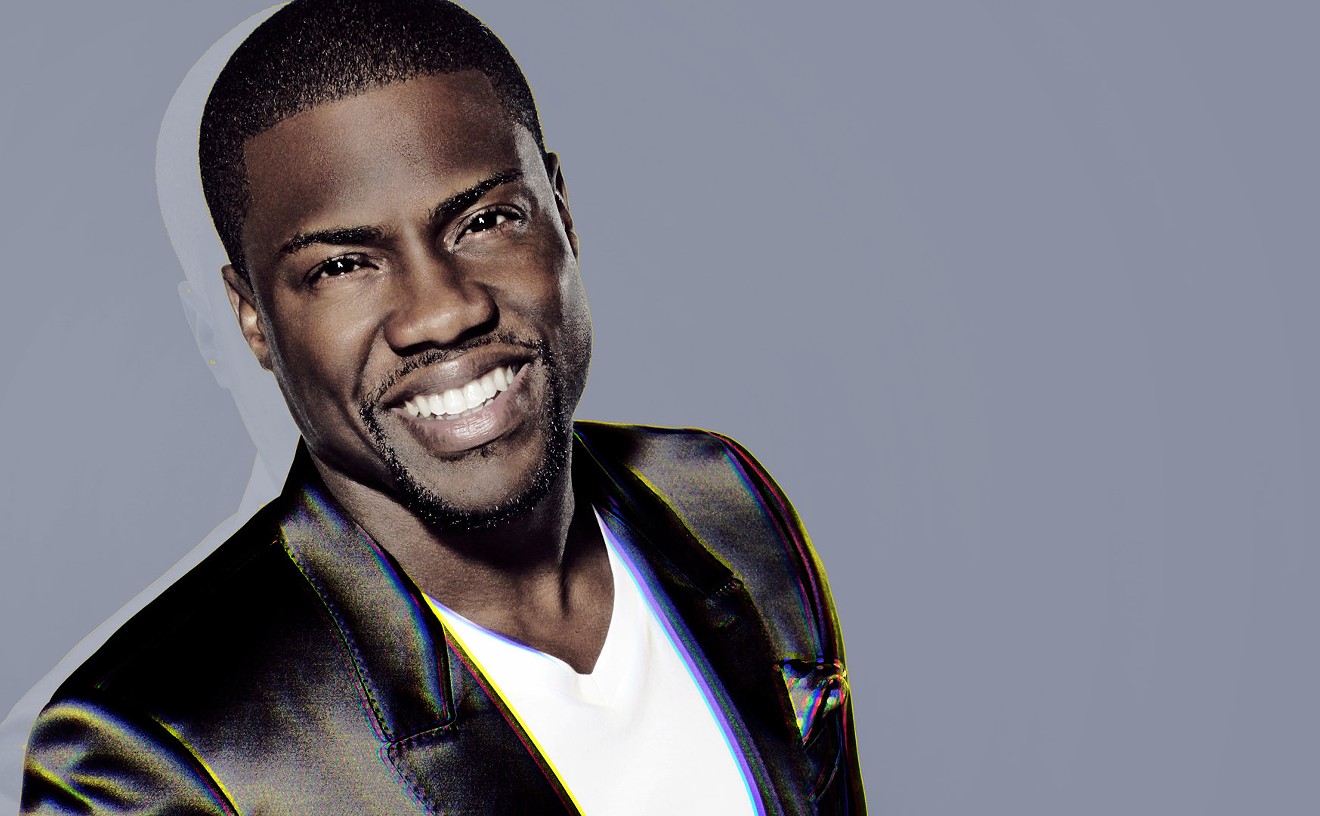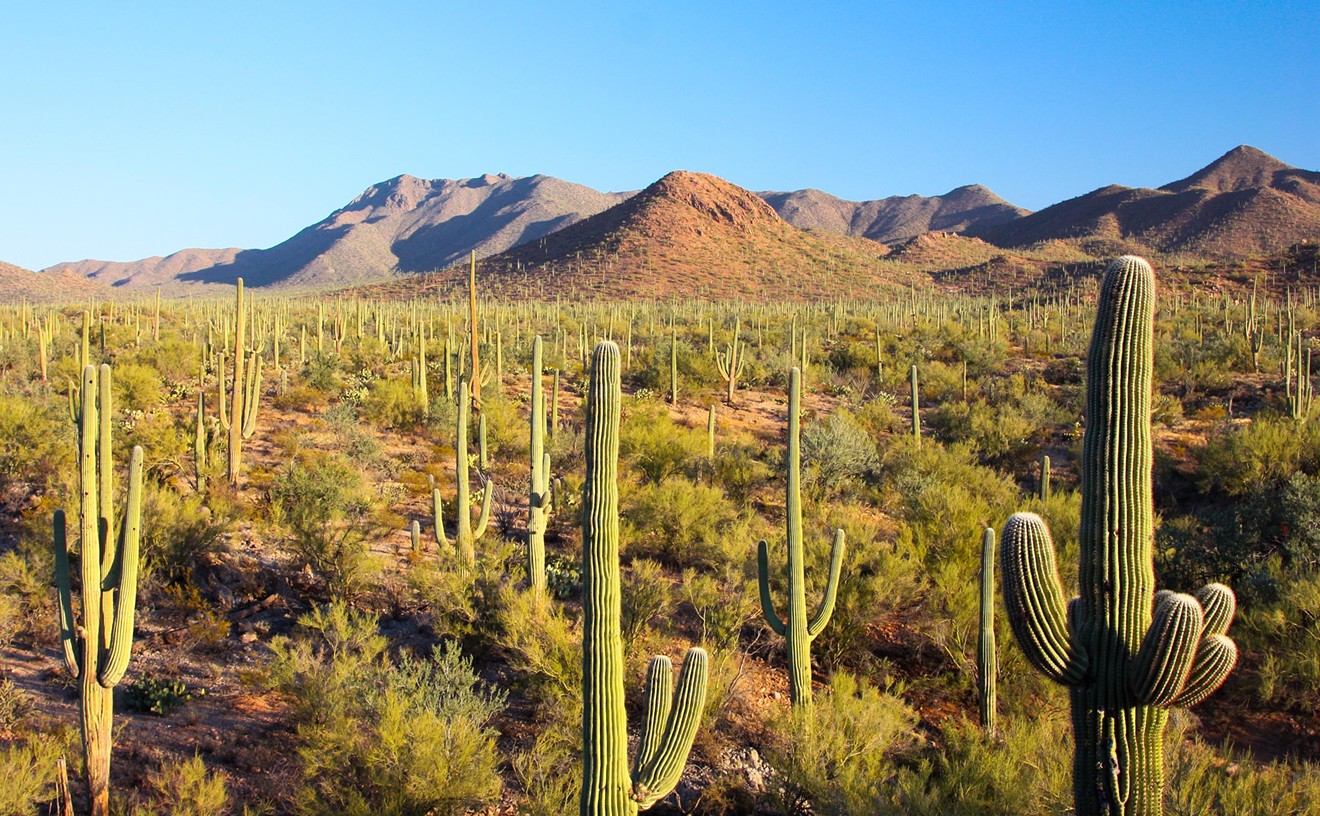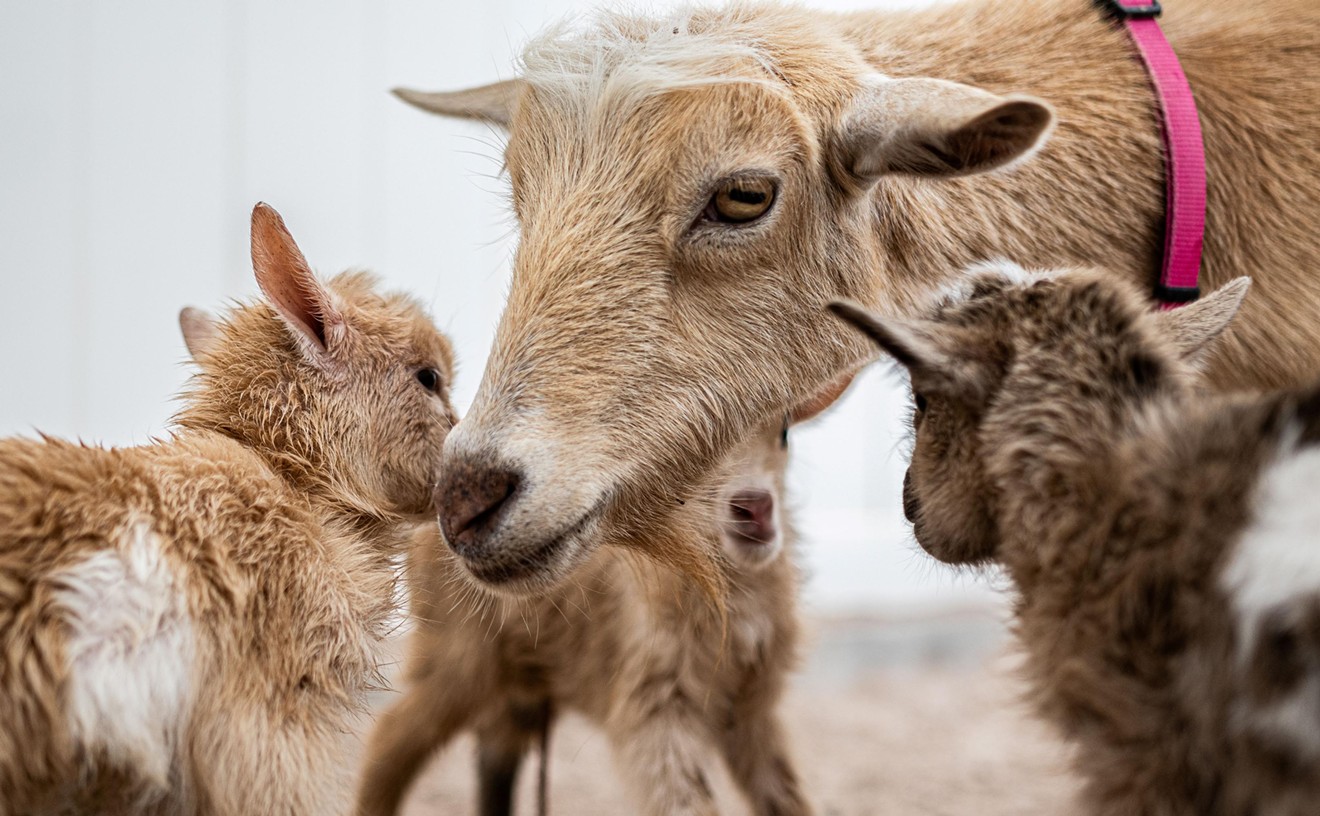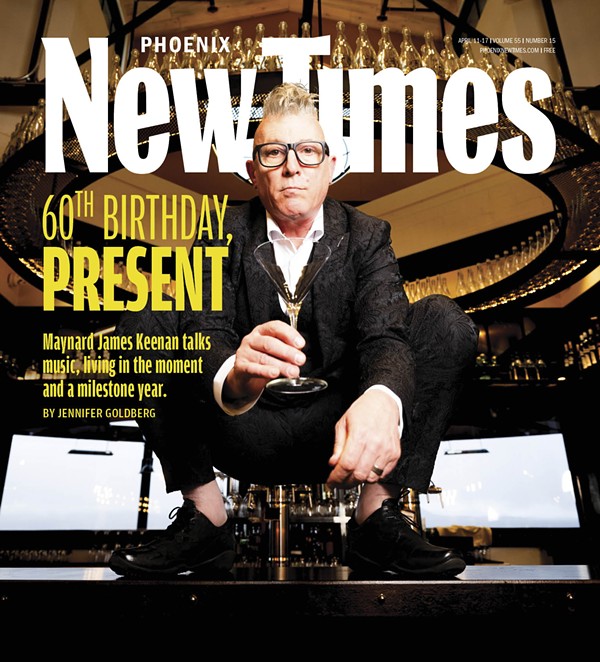Moody, who has one blue eye and one green eye, grew up in Tempe. “But my mother
After college at ASU, where his dad was a professor, Moody moved in 1969 to Los Angeles, where he worked as an arts reporter at the Los Angeles Free Press. “I got radicalized there,” he said, winking his blue eye. “I visited all the happening art galleries. But L.A. was crazy, so I came back home.”
He rented a little bungalow near 11th and Grand avenues and began dreaming of a place where creative people could come together. “I was driving around, and I saw this house and I said, ‘That place. That’s it.’”
He and a friend named Larry Vanderbeek bought the house in 1971 for $11,000. “Larry got a VA loan,” Moody said. “We co-founded Alwun House, and it’s been Alwun ever since.” The name, Moody said, is a play on “all one,” as in all people coming together as one, in the name of art.
Early on, Alwun was primarily a performance space with a literary bent. “We published something called Symbiosis, we had storytellers, we had gallery shows, we had Native American spiritual things,” he recalled of Alwun’s beginnings. “We were into metaphysics, so we had a lot of gong meditation, things like that. We had Charles Lewis performing, and we called it Uptown Jazz Downtown. In the '80s, we got into mime.” Samuel Avital came and spoke about miming’s relationship to Judaic letters.
“All arts were represented,” added Dana Lee, Moody’s life partner
Lee arrived in 1983 from Kansas. “I had a degree in architecture, and I felt like I landed in Podunk,” he admitted. “I met Kim and I thought Alwun House was great, but it was disorganized. I said, ‘I can help organize this place.’ I’ve been here ever since.”
Back then, locals found Alwun by word of mouth, Lee said. “We made flyers for our events. Back then we made the flyers by hand, with press-type. Remember press-type?”
“And typewriters,” Moody said, mostly to himself. He looked over at a pair of large dogs sleeping near the porch steps. “You know, I came from a radical perspective, so Alwun was always involved with causes like Chicanas Por La Causa. We held the first meeting of the Recall Mecham movement,” he said, remembering the successful attempt to have the governor booted from office.
In Alwun’s earliest years, Moody focused on physical improvements to the house. “Actually, those never end,” he admitted. “Meanwhile, the '70s was about the fermenting, the bubbling up of downtown creativity.”
He pointed out into the yard, past a giant ornamental spider and a shiny koi pond. “Artlink itself began right over there, at a meeting where someone said, ‘Let’s form a group that promotes artists.’ There were no arts organizations other than the state arts commission. It was a different world then. Artists applying for grants? It wasn’t thought of in those days.”
Today, there are grants and arts districts and a long list of local artist organizations. But Alwun, Moody insisted, has stayed largely the same. “You come here, and you feel like you’re in your own backyard,” he said with a wide smile. “With
Alwun nearly went away, Lee remembered, in the late '80s. “We took out a loan on the house, to fund events at outside venues,” he explained. “The expenses were atrocious, and we lost our shirts. That led to two policy changes: no more loans and no more off-site anything.”
A grant from the state historic preservation group saved the house, which is now owned free and clear by the Alwun House Foundation. Both Moody and Lee are involved in the Garfield Neighborhood Association, which they said is focused on cleaning up the area. “The attitude that downtown is unseemly has changed,” said Moody. “This neighborhood was considered dangerous.”
“We used to have to chain down our water hose,” Lee interrupted. “Now, it’s moms and dads pushing strollers. Of course, Mom has a fuchsia mohawk and Dad’s wearing a kilt, but still.”
Moody nodded toward the acre of land just beyond Alwun’s back fence, a lot purchased recently by the Foundation. There, he said, he and Lee were developing what they called a “green art park.”
“We’ll have parking, LED lighting, trees, a lush desert landscaping,” he mused. “We’re planning movie nights and staged readings and other family things.” Some folks from Burning Man presented something called Ignite there recently and shot
Moody shrugged. “Alwun has always been about positive change. If art doesn’t transform

